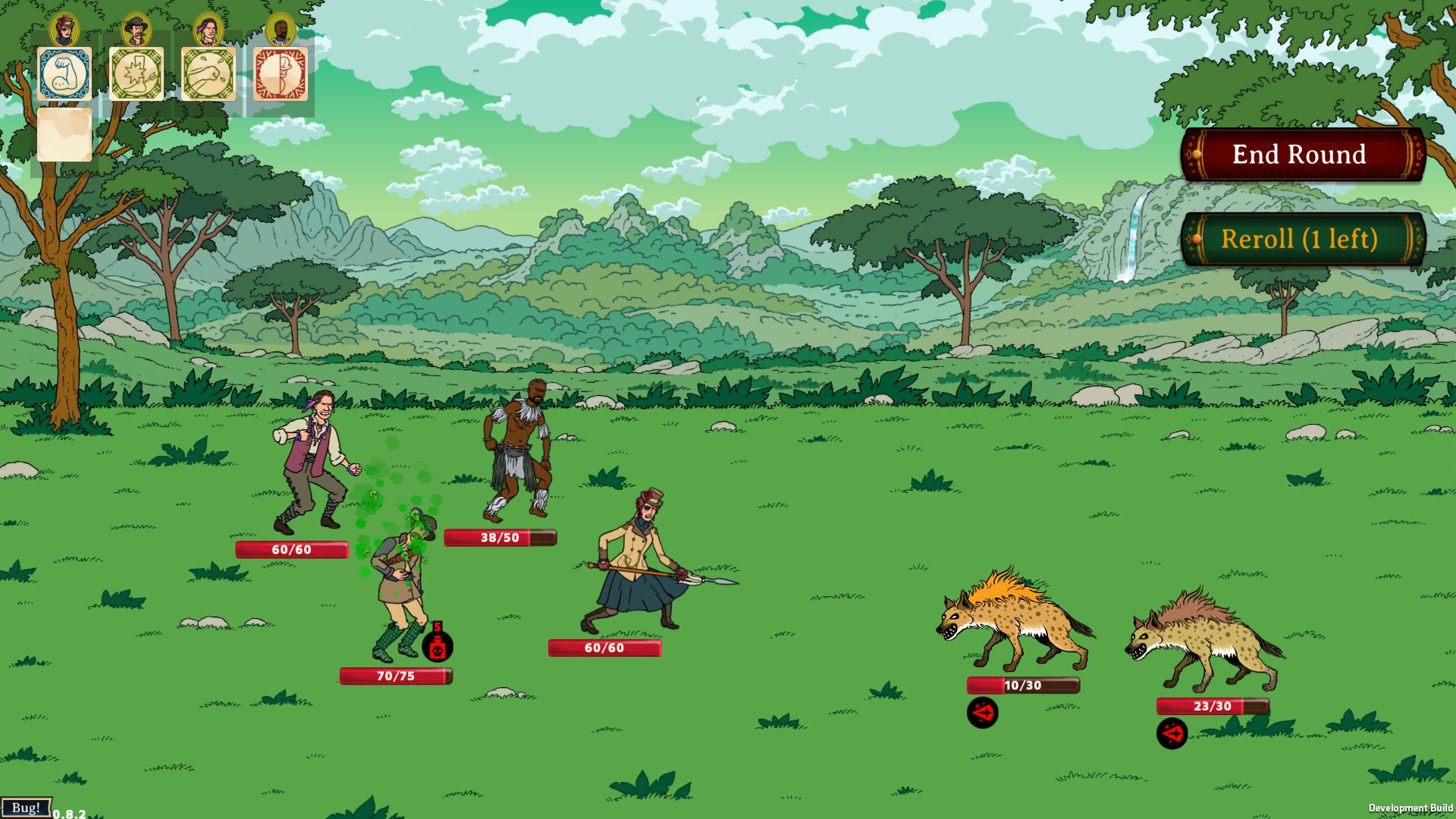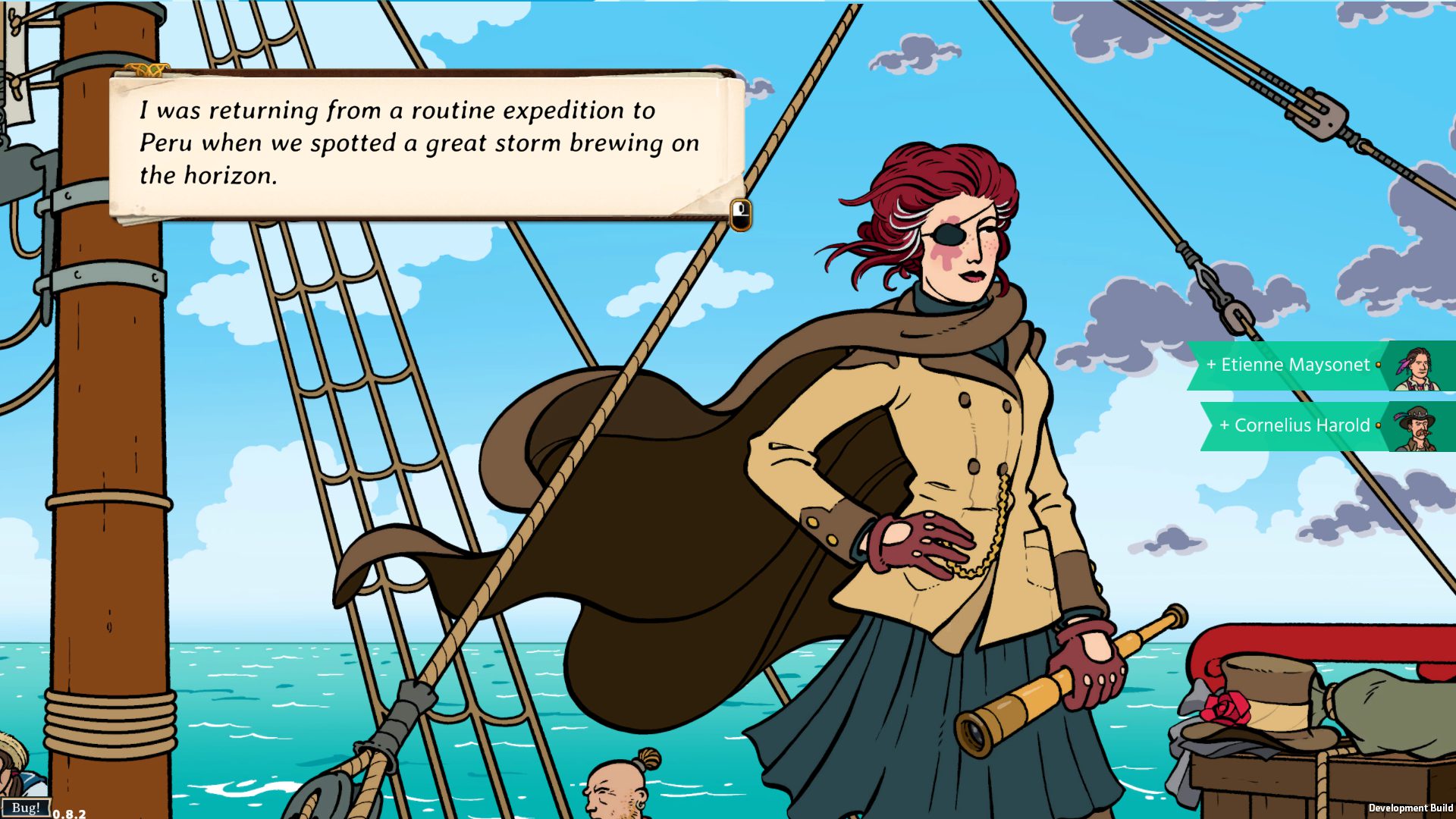Curious Expedition 2 — An uneventful journey
When it comes to exploration in games, it needs to accomplish one simple, yet lofty task for me to stay interested: Feed my curiosity. Let me explore a world that feels alive, teeming with possibilities and with so much character that I cant get up and walk away until I explore “one more area”. Curious Expedition 2 however, did quite the opposite.
Describing itself as an Early Access expedition roguelike, Curious Expedition 2 see’s players lead a group of explorers on journeys set in the 19th century across a host of procedurally generated islands, with each of these islands boasting wildly different creatures, settings and opportunities to face. Players can recruit a host of different characters that include soldiers, treasure-seeking explorers, or even donkeys to join them on their excursions, with the ultimate goal of finding treasure and glory for your adventures.
But Curious Expedition 2 feels like a game I’ve played before, and not really in a good way. The initial intrigue I had was quickly replaced by this sense of monotony and tediousness that I wasn’t able to shake for my entire time playing, and despite my best efforts I was ultimately was left uninterested after only a few short hours.
So what was my main problem with the game? Put plainly, I found it boring.
Compared to other games I’ve played in the genre like Legend of Keepers, little about the game felt new or at least had a refreshing new spin on it for me to get excited about it while I played other than its comic art style and unique setting.
 Firstly, team recruitment felt more like fashion over form. Quite often I didn’t notice any meaning difference on what character I picked, other than a few perks or abilities and generally wasn’t all that bothered about who I was recruiting, as I never felt it made as much of an impact as I wanted.
Firstly, team recruitment felt more like fashion over form. Quite often I didn’t notice any meaning difference on what character I picked, other than a few perks or abilities and generally wasn’t all that bothered about who I was recruiting, as I never felt it made as much of an impact as I wanted.
The same could be said for the equipment and inventory management, as I often found myself getting the same items, like chocolates and whiskey every time I did an expedition, purely to keep the sanity meter from dropping too low, which ended up being more of a nuisance than an engaging mechanic. Furthermore, the game wants players’ choices and characters to play a big part in the overall experience, with different team members forming relationships or responding to the environment in different ways. But with little to differentiate the characters other than looks, I wasn’t attached to any team members and didn’t really care what happened to them.
What was one of the unique mechanics was the use of dice, with characters having different dice with a colouring system, Red for an attack, blue or buffs, and green for abilities. These dice are used to solve tasks, or to be used in combat. While it can be argued it makes things interesting as you have to adapt to the unexpected, it ended up being the most frustrating aspect of my time playing, reducing nearly all moments of meaning like puzzles or combat moments to chance, leaving out skill almost completely.
 Most of the missions and expeditions I had weren’t much more exciting either, as most were to simply head to the marker on the map, with no real challenge or incentive to explore the rest of the map and frankly wasn’t really keeping my attention for too long. I often found myself uninterested with wandering across a map to get to an objective with little real or meaningful moments that I can remember other than a few in story missions, and even those didn’t offer much in the way of unique moments.
Most of the missions and expeditions I had weren’t much more exciting either, as most were to simply head to the marker on the map, with no real challenge or incentive to explore the rest of the map and frankly wasn’t really keeping my attention for too long. I often found myself uninterested with wandering across a map to get to an objective with little real or meaningful moments that I can remember other than a few in story missions, and even those didn’t offer much in the way of unique moments.
But like I said at the start of this review, I’m all about exploration, and I was hoping that despite some of the other shortcomings the game has that exploring the different islands would really save it for me, but this ended up being the most upsetting part of my whole experience.
What should have been the most engaging and the centrepiece of the game ended up being the most disappointing, as trying to explore the map while managing the sanity meter ended up being a balancing act that didn’t hold up. But most upsetting was the fact that I had little to no drive to explore, and in a game where exploring the maps is such a selling point, that’s a problem.

Besides a few combat encounters and some landmarks like finding native peoples or stumbling across shrines, I wasn’t interested in going around a lot of the maps when it didn’t feel rewarding or worth my time, the characters or how the game played out, as least during my time playing. When I think of exploration I think of games like Zelda. While those games can vary in their level of freedom, I still felt this drive and sense of accomplishment whenever I found or explored an area or found an item, but I never got that same level of satisfaction when I was playing Curious expedition 2. What should have felt rewarding felt more like a chore, and that’s one word you don’t want to be associated with a game like this.
Maybe it’s fatigue, but the rogue-lite and roguelike genre have not done much to excite me in a while bare a few expectations like the formerly mentioned Legend of Keepers, and my time with Curious Expedition 2 ended up being more frustrating than rewarding, and every opportunity it had to redeem itself in some way seemed to let me down. Perhaps after some time with more development, it will reach its full potential.
Fans of the first game or the genre may enjoy this, but for me, it doesn’t live up to its goals, and I can’t see myself going on any new expeditions anytime soon.
Curious Expedition 2 is currently in Early Access on Steam for PC, Mac and Linux. Feel free to check out the developer’s Website or Twitter for more details.
Comments are closed.